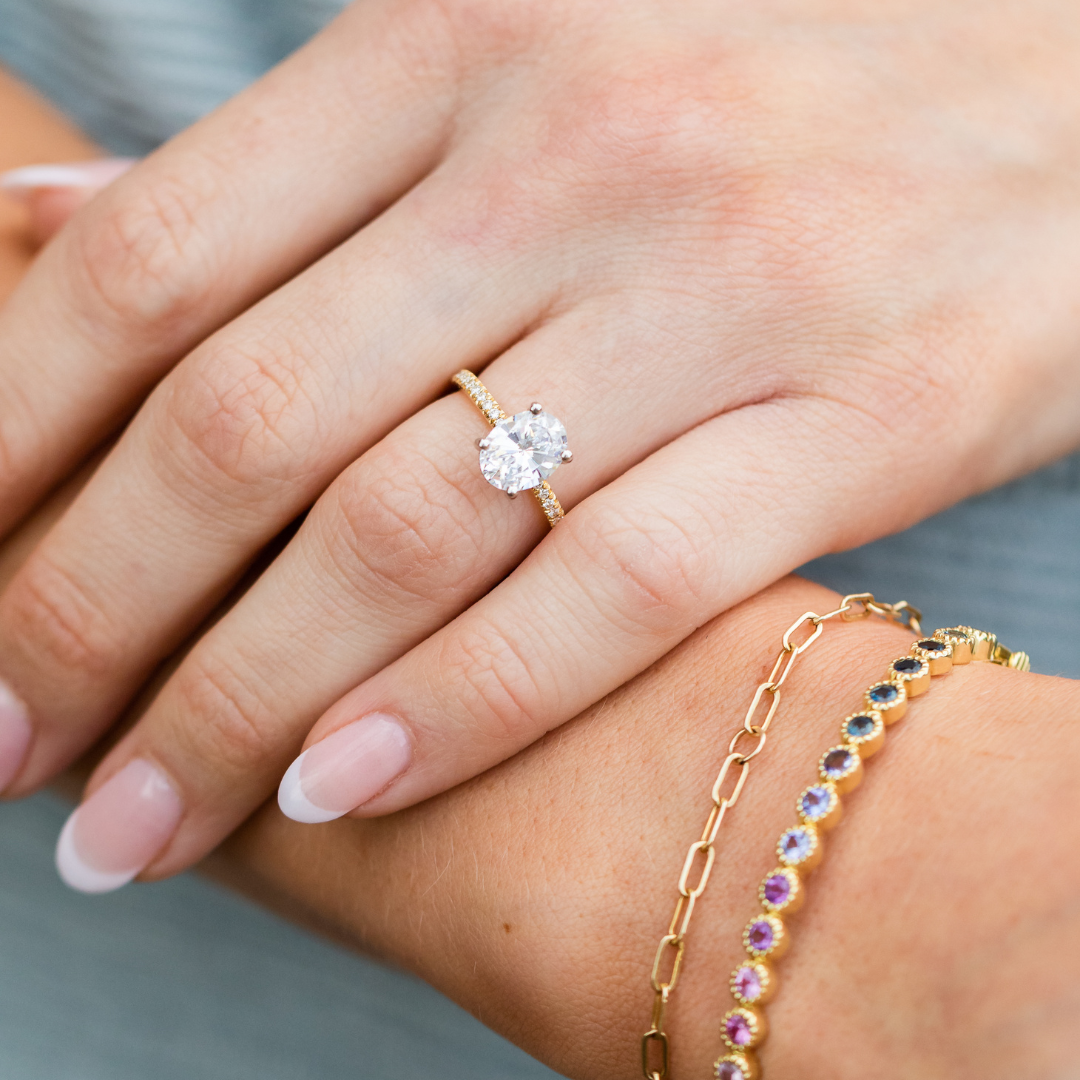
Among the choices one has to make when it comes to choosing the perfect engagement ring, deciding if the ring is going to be a high-set or low-set ring is made early on in the process. Perhaps this is the first time ever considering which one suits you or your spouse-to-be, but don’t fret: when choosing between the two, it’s all about personal preference. For some people that is enough; for others, a pros and cons list is best to help decide. If you belong in the latter group, keep reading - we have compiled just that to help make the decision a bit easier.

All About Profile
Whether you just started ring shopping, or you’ve been at it awhile, you’ll learn that engagement rings come in two profiles: high-set and low-set. The difference between the two is right there in the name. How high the center stone sits atop your finger determines whether it is high or low set. The best way to know for sure is to inspect the ring from the side, or better known as, the profile angle. An elevated center stone with space between it and the band indicates a high-set; a stone that sits almost flush with the band is going to be low-set.
Most high-set rings include prongs that “lift” the diamond off the band and hold it in place. Most low-set rings, but not all, have a bezel setting, where the stone’s edges are surrounded in a metal casing.
Pros and Cons to the High-Set Ring
Many people love the high-set look because of how prominent the center stone is featured and just how much more brilliance it appears to have. Because the stone sits so high off the finger, the stone appears larger and with the extra space, there is more light to interact with the facets of the stone. The high-set ring pairs well with almost any wedding band as the rings lay snugly together.
The downside to the high-set ring is that in addition to catching all the attention, the added height of the diamond makes it more prone to catching on everything from clothes to furniture. If you work with your hands, consider that you may spend a lot time of time trying to not knock your ring on things you come into contact with on a daily basis.
Pros and Cons to the Low-Set Ring
When it comes how protected the center stone is, the low-set ring is always a safe bet. Ideal for the bride that is active, outdoorsy, or works with her hands, the low-set profile sits lower, if not completely flush with the metal of the band. This makes a great choice for people who constantly wear gloves don’t want to worry about snagging their diamond while destroying their means of protection. Because the center stone is so protected, this makes the ring extremely durable for its lifespan.
The cons to a low-profile ring are just the opposite of the high-set’s pros. When a stone is so close to the band, or sometimes, encircled by it, the stone may appear smaller and have less sparkle. Most large gemstones require a high setting, but low-sets are better suited for smaller stones. Low-set rings do not offer a ton of versatility nor do they have a lot of options for wedding bands since the stone’s placement affects how the rings lay.
While the height of your setting may not feel like the most important choice you make for your engagement ring, consider the impact over time of wearing it. Give some thought as to how the ring will not only fit your finger, but in your day-to-day life.
Visit Schiffman's Jewelers at one of our Greensboro or Winston-Salem locations to explore our wide selection of diamond engagement rings! We would be happy to help you find the perfect piece for you and your significant other!

